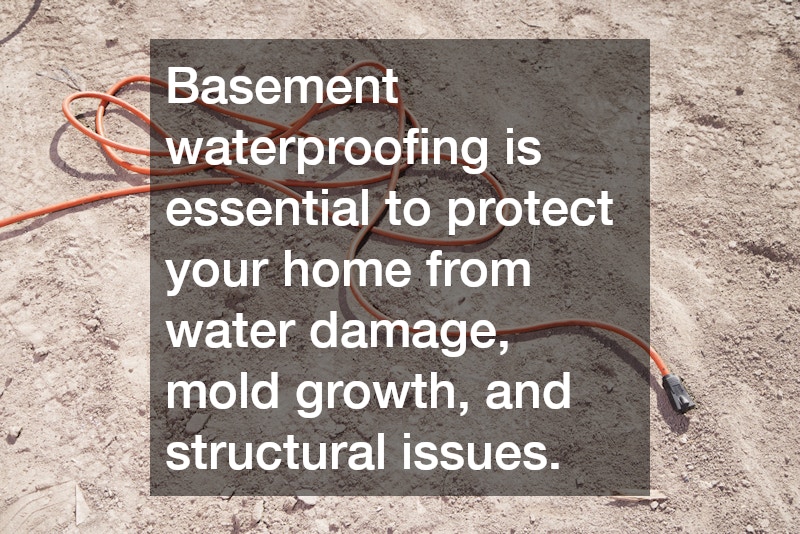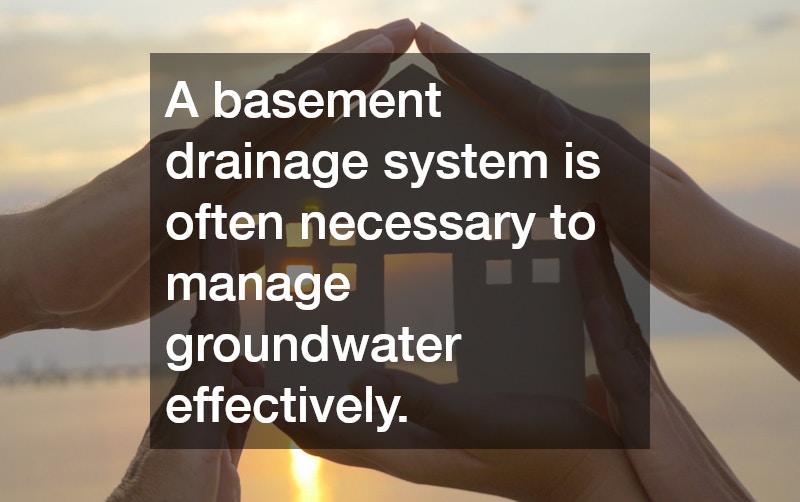
Basement waterproofing is essential to protect your home from water damage, mold growth, and structural issues. A well-sealed and dry basement ensures a healthier environment and adds value to your property. Using water sealant paint for basement walls is a popular method for preventing moisture seepage. This specialized paint creates a waterproof barrier on concrete surfaces, helping to block minor leaks and control humidity. It’s a cost-effective solution, particularly when combined with other waterproofing measures.

A basement drainage system is often necessary to manage groundwater effectively. French drains or sump pump systems are commonly installed to direct water away from the foundation, keeping the area dry even during heavy rainfall or snowmelt. An interior gutter system is another solution for controlling basement water intrusion. These systems are installed along the inside perimeter of the basement floor to collect and channel water to a sump pump, ensuring it’s removed before causing damage. This option is ideal for homes prone to interior leaks or with poor exterior drainage.

When choosing paint for basement walls, look for moisture-resistant options that prevent mold and mildew growth. In addition to waterproofing paint, epoxy-based paints provide durability and enhance the appearance of unfinished basements. Combining drainage, sealants, and proper paint ensures a dry, functional space. Make the call today to get started!

When storm season or other issues arise, over 98% of homes with basements will have water damage. While this damage can be caused by a variety of factors, it might be that your basement needs one–or more–of the following waterproofing basement services:
- Fixing leaks in basement walls
- Repairing cracks in foundation walls
- Repairing foundation cracks
- Foundation sealing
- Water proofing solutions
Protecting Your Investment
Since you want to protect the investment you made in your home as well as the safety of your family, using the services of a waterproofing basement specialist can make a substantial difference. Consider the benefits of planning ahead versus waiting until you really need significant repairs. Waterproofing your basement before storm season hits can make a significant difference and potentially reduce your overall expenses.
The Costs of Water Damage
Are you aware of the potential cost of water damage? Just to give you an idea, in 2013, it accounted for 26.4% of all insurance loss claims filed in the United States. Furthermore, floods are considered to be the primary disaster in the the United States, according to the National Flood Insurance Program. On an annual basis, an average of $3 billion in claims are filed.
Signs That Foundation Repairs Are Needed
Since you want to plan ahead to do your best to ensure you’re as prepared as you can be, you’ll want to check your foundation for cracks. If you’re not positive that you have any cracks in your existing basement foundation or walls, but suspect that there may be, contact a basement waterproofing contractor to make sure.
If you discover that your foundation has cracks wider than one-fourth-of-an-inch wide, that you have stair-step cracks in any concrete blocks or bricks, then you should definitely contact a basement waterproofing company. .
Protecting Your Basement Foundation
If you have a garden, yard, or other patch of dirt around your foundation, then you need to make sure that there is an adequate slope to allow for drainage. There should be a slope of at least six inches per ten-horizontal feet.
If you have plants, bushes, or trees, these should be placed at least two feet away from the foundation. They should also be placed deep enough into the soil so that water is not directed close to the foundation.
What You Can Do to Prevent the Spreading of Mold
Often referred to as the “M” word, mold can create a variety of problems–health issues one of the more significant ones. If you’ve experienced a flood in your basement laundry room, apartment, or storage area, be sure to remove organic items such as sheets, towels, and any upholstered furniture to avoid growing mold.
Remember that old saying about an ounce of prevention? Basically, if your cloth items aren’t dry within 48 hours, they could begin to mold. After 48 hours, it’s better to throw them away rather than risk your health and the possibility that the mold will grow and damage other items in your home.
If your basement and lower floors have been flooded, then be sure to clean up the best you can.You will also want to dry out your home within 24-to-48 hours. In this way, you will further prevent the spreading of mold.
When to Call in a Professional
Whether you’re preparing ahead of time or your basement has unfortunately been flooded, it’s important to know when to call in a professional. If you’re unable to determine what type of home waterproofing you may need–or want–contacting a waterproofing basement service would be an excellent idea.